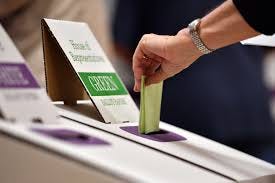The Light Breeze of Change
First published by The Monthly.
Paul Keating reckoned that if you change the government, you change the country. Presumably the opposite applies: if you re-elect a government, you keep the country just as it is.
Which may or may not be what we were after.
It’s fair to wonder whether we begin this new Albanese term, just a month old, in stasis and beset by the same timeworn cycle of intractables: poverty and growing disadvantage, elevated carbon emissions, continuing Aboriginal deaths in custody, endemic violence against women, housing unaffordability and all the rest. Or, by delivering a landslide victory, have we in effect changed the government through weight of seats and implied mandate, and delivered a sudden sense of country-changing possibility?
This was a government that spent its first term caught in slender ground between prevarication and incrementalism – perhaps a 77-member, two-seat majority, a belligerent opposition and an antagonistically activist media will do that. Might 94 seats change that mood? Will that tumbling, rollicking win of May 2025 finally erase Albanese’s post-Voice ennui and stir an emboldened vigour in a government that by late 2024 seemed reactive, unambitious, browbeaten and meek?
You could make the case that the second term vote has delivered so significant a reconstruction of parliamentary power and alignment that it has created something close to a change of government by degree, delivering a mandate that might even imply an expressed popular desire for equally expansionary thinking.
By the numbers though, it’s not quite so clear-cut.
We know the parliamentary outcome: Labor 94 seats, Coalition 43, Greens 1, Centre Alliance 1, Katter Australia Party (eponymously) 1, independents 11. By seats in the chamber, it is majority democracy manifest. Comprehensive. But the detailed numbers suggest a nation a little more closely divided.
By the Australian Electoral Commission’s figures, the ALP received 5,354,138 first-preference votes. The Coalition parties (Liberal, National, LNP and CLP), a total of 4,928,742. That’s a margin of 425,996. The two-party-referred numbers suggest a clearer division, with Labor polling 8,507,268 against the Coalition’s 6,883,313, a margin of better than 1.6 million. The first preference independent vote was significant: 1,126,051. Pauline Hanson’s One Nation secured 991,814. Trumpet of Patriots showed a disastrous return on investment, with $60 million spent for 296,076 votes (that’s $202.66 per vote, for the curious). Bottom of the heap were the Australian Democrats, with 688. They could hire a hall.
The eye goes back to that Labor/Coalition first-preference margin of 425,996, a number represented in the new parliament by a difference of 51 seats; slender numbers on which to build that yawning majority chasm. The underlying possibility is of a country more bifurcated than is suggested by the spread of seats in the House of Representatives.
A confident and energetic government might well build something a few grains closer to a national consensus from that. It’s possible: there must be some on the undecided and wavering margins whose allegiance might be swayed by a government resolute in its sense of self and determined on its policy course. Its parliamentary numbers might reasonably lend the Albanese government an air of second-term elan, and that might be enough to produce a grudging acceptance from some Australians whose votes this year went otherwise. A confidence covenant.
On the face of it, though, the May election presents us with a quirky democratic paradox, of a country almost evenly divided that, through electoral mathematics and probably electoral skill, delivers an overwhelming mandate. The effect might reasonably be a quiet disillusion among conservative voters, a sense no doubt amplified by the conduct of their representatives in the past month.
Deeper divisions aside, that mandate’s the thing, and it’s a margin of such considerable breadth as to call into question one or two of the key assumptions in Australian political life.
The most significant ought to be a reassessment inside the political media of their reflex to pursue “balance” in reporting, a thing that goes hand in hand with the persistent instinct to frame politics as a race to some kind of linear finish. That last is a useful technique that offers a role in punditry for journalists who operate in a pretty pure state of policy ignorance, but who can nonetheless gravely assess the fluctuations, minute by minute, of the race.
The insistence on balance is a companion idea, and equally vapid, but what does it mean when the players routinely sought to provide “balance” to government assertions represent a comparatively miniscule parliamentary presence?
If Shadow Treasurer Ted O’Brien’s party trails Treasurer Jim Chalmers’ by 51 seats, is Ted in a position to offer a “balancing” perspective to any of Jim’s ideas?
It’s worth thinking on, though the daunting possibility is that it’s a conundrum best resolved by journalists balancing the government’s assertions with alternative perspectives based on actual policy knowledge. That would run counter to the majority press gallery practice of decades, but, who knows: change the government, change the country.




